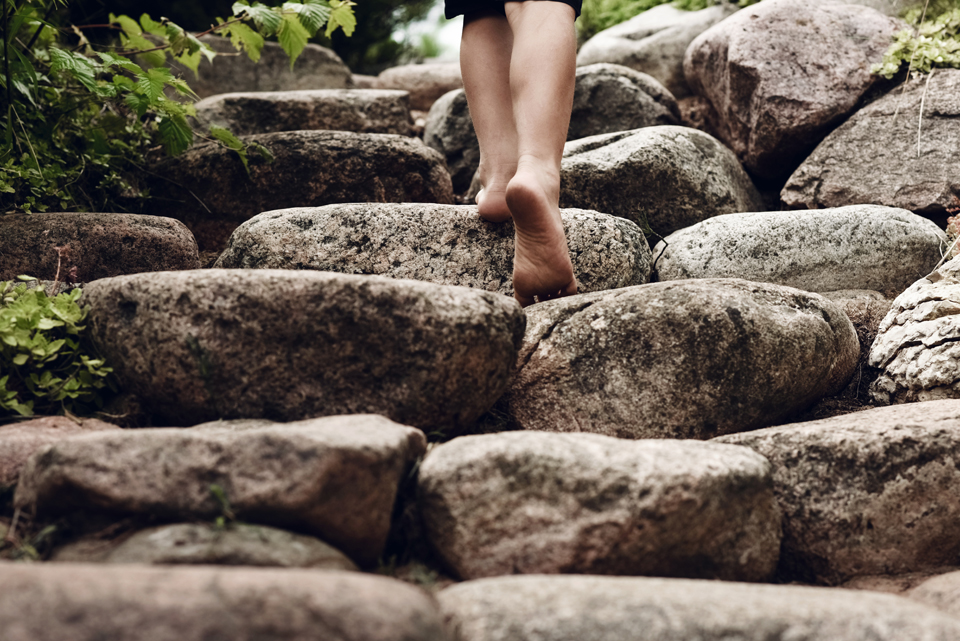At this point in human history, there is no shortage of entertainment. In many ways, modern western culture is engaged in the relentless pursuit of greater and greater means by which to distract the mind. Boredom-averse as we are, we seek to be entertained at all times. But how often do we experience awe?
Awe, when you think about it, is not the same thing as entertainment. Consider the last time you felt a genuine sense of awe. While entertainment keeps our minds occupied, awe stops us in our tracks. Where entertainment might delight our senses, awe renders us stunned and speechless. Awe is moving and profound and involves reverence and respect. Usually the awe-inspiring object is of great magnitude, and induces a feeling of being outside our comfort zone in one way or another.
Interestingly, although we use the word “awesome” to describe something pleasing or favourable, the original meaning of the word “awe” denoted a sense of dread. Today, the word still carries a tinge of fear, as well as a sense of something far greater than entertainment, or even wonder.
Psychologists Dacher Keltner and Jonathan Haidt, who published a seminal 2003 paper on awe, note that the word has evolved to mean “dread mingled with veneration, reverential or respectful fear; and the attitude of a mind subdued to profound reverence in the presence of supreme authority, moral greatness or sublimity, or mysterious sacredness.”
The small self
Many of those writing on the topic point out that encounters with awe inspire a phenomenon known as “the small self”, where we suddenly feel aware of our own smallness in comparison to something much greater than ourselves. It’s an experience that leaves us feeling simultaneously humbled and deeply connected.
Writing for Psychology Today, Bryan E Robinson describes awe as, “An overwhelming, self-transcendent sense of wonder and reverence in which you feel a part of something that is vast, larger than you, and that transcends your understanding of the world … Some people refer to it as a form of rapture or reverie or an altered state that unearths joy, wellbeing and inner calm.”
I can vouch for this: years ago, as a new yoga teacher riddled with nerves, I would drive to the ocean just before instructing a class and ask myself whether I’d rather teach the class or be plunged into the rugged and wild Bass Strait swell.
Humbled by the thought of my own insignificance amid the turbulent waves, my nerves would suddenly dissipate. “It happens when we view beauty amid vastness, predominantly in nature, triggering a sense of deep belonging,” writes Sarah Wilson in her phenomenal 2020 book, This One Wild and Precious Life. “Our smallness against a backdrop of immensity reminds us of our insignificance and interconnectedness, which brings about a profound, yet elated, peace.”
As Sarah points out, it’s often the natural world that inspires wonder and reverence. We feel it when gazing upon the ocean, wandering through a rainforest, gazing up at a mountain, surveying the expanse of a desert or consuming a starry night sky. All of these natural wonders have the power to plunge us into feelings of wholeness and humility.
And yet, these feelings are not limited to jaw-dropping, large-scale phenomena: nature’s smaller marvels can awe us, too — just think of abundant spring flowers, shocks of autumn leaves or bees collecting pollen. We can also experience awe when encountering great feats of human creativity — for example, the pyramids of Egypt, astounding pieces of visual art, or centuries-old architecture.
In a world where social media draws us ever deeper into narcissism and myopia, rediscovering the “small self” seems increasingly important. The benefits Although humans have clearly always experienced awe, scientists have only really started diving into the subject in the past two decades. In a 2018 report put together by the Greater Good Science Center at UC Berkeley, researchers collated the small body of awe research into one paper — including the fascinating list of positive effects that unfold when we experience awe.
As well as feelings of greater connectedness, Dacher and Jonathan found that awe is literally a mind-bending and mind-altering experience. Through a process they call “need for accommodation”, the mind has to reconfigure itself in order to make space to incorporate the experience. This leads to a more expanded mind. Because of this, researchers such as David Yaden suggest that awe isn’t simply an emotion, but an altered state of consciousness.
Researchers have also found that we are less materialistic, more charitable and more caring towards others following an encounter with awe. Moments of awe can also expand our perception of time (which is valuable in a world where we often feel rushed), help us to be present and improve our mood and sense of wellbeing (if the awe-inducing object is judged to be non-threatening) and overall life satisfaction.
There are even physiological responses that occur alongside awe: as well as triggering goose bumps and sending shivers down our spines, studies suggest that awe has the potential to activate the parasympathetic (“rest and digest”) nervous system and reduce inflammation in the body.
And in addition to the personal benefits that come with experiencing awe, Sarah points out that awe (especially the nature-based variety) might just be the medicine our planet needs. If we continually experience a sense of awe in the face of the natural world, we might be more inclined to care for the Earth. “We need to be in nature, to return to our true nature, to be held and awed by it, to love it wildly, so that we will fight for it,” she writes.
Cultivating awe
How to experience awe
In 2020, a collection of researchers began leading a group of older people on weekly “awe walks”. Each week for eight weeks, the group was encouraged to adopt an attitude of awe while taking a 15-minute walk through a park. The findings, which were published in Emotion journal, reflected lower stress levels, improved mood and better social connectivity among the participants, as well as a greater sense of presence (as opposed to being caught up in the dramas of daily life).
Not only does this study speak to the benefits of regular bouts of awe, but also that awe can be a consciously cultivated and active process. Like a muscle that needs to be strengthened or a skill that needs sharpening, we can get better at experiencing awe. And while our hyper-connected society seems to need ever-increasing amounts of entertainment to feel stimulated, awe never gets old (ask yourself whether you’ve ever tired of looking at an exquisite sunset).
The other good news is that potential awe-inducing experiences are all around us. Make a list of all the things that inspire awe in you — this might include sunrises, art galleries and museums, the ocean, the night sky, a breathtaking piece of classical music, beautiful gardens, gushing rivers, tall trees, new landscapes — and resolve to incorporate more of these items into your weekly routine. You might take yourself on a weekly “awe walk” with the express purpose of cultivating awe, or research and seek out awe-inducing experiences on your next holiday.
If nothing else, the Greater Good Science Center recommends watching awe-inspiring videos (such as footage of Yosemite National Park), reading a story that describes an awesome experience, or writing about a previous encounter you’ve had with awe.
As Sarah emphasises, the power of awe in making us feel more human and alive should not be underestimated. “Awe, more than any other experience I know, connects us to the vulnerability, wildness and preciousness of life.
Want to learn more about being moved? Visit our moved archive.




